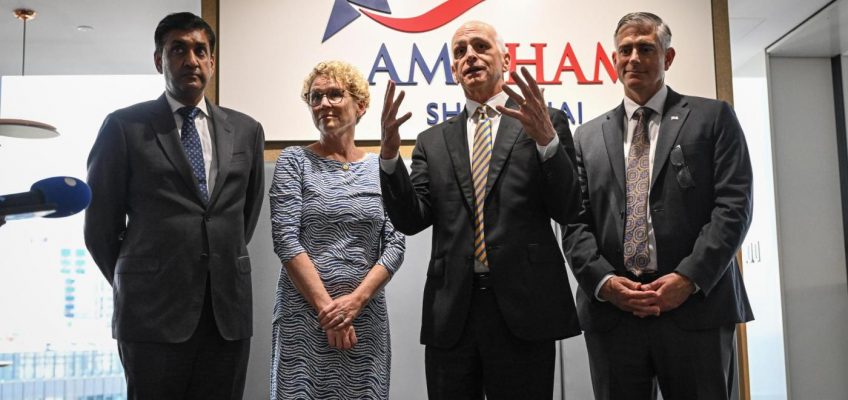By James Royal, Ph.D., Bankrate.com
While Bitcoin spent the last decade soaring and making millionaires out of many people, other owners of the world’s largest cryptocurrency have missed out. Why? One major reason: They’ve lost access to their account. In fact, more than $400 billion in Bitcoin is estimated to be lost — but some is recoverable, says at least one firm.
A 2023 report from Unchained Capital, a Bitcoin financial services company, estimated that up to 3.8 million bitcoins have been lost. That’s out of a total of about 19.9 million in existence today, and a maximum supply of 21 million tokens when Bitcoin is fully mined. That could mean as much as 19% of today’s supply is gone forever. Or is it?
Traders who have lost access to their Bitcoin or other digital currencies and assets may have the ability to recover them, at least with the help of one high-tech firm.
Bitcoins may be recoverable
Bitcoin’s vaunted security cuts both ways, preventing the bad guys from getting your stash but also — and often — you, too!
One of the most highly touted aspects of Bitcoin and other cryptocurrencies such as Ethereum or Dogecoin is their security. Not only are they nearly impossible to counterfeit, but transactions are almost irrevocable. Once someone has your bitcoins, they own them for keeps. It’s a similar situation if you forget your password, it gets tossed out as part of a move or you throw away a hard drive holding the coins.
But Chris and Charlie Brooks, father-and-son founders of CryptoAssetRecovery.com, have been recovering Bitcoin and other digital assets since 2017 for people who have lost their passwords, despite the high security.
“We estimate that about 2.5% of that approximately 20% of lost coins could still be recovered,” says Chris. The figure amounts to as much as $11 billion in recoverable assets with Bitcoin trading around $115,000.
Of course, not all digital assets are recoverable. Corrupted hard drives or those that were thrown away are likely gone for good. But Crypto Asset Recovery says it has a decent chance of getting your lost loot back if you had encrypted private keys but forgot your password or if you had a failed hard drive with private keys.
However, even if you have a wallet and they are able to pry it open, you may not have any coins in it at all. Former Bitcoin owners who dabbled in the cryptocurrency years ago may simply be hoping that they had long-lost treasure left on that old hard drive but weren’t certain and decided to have a look just in case.
“About half the wallets we crack are empty,” according to Chris and Charlie.
How your trapped crypto can be retrieved from a locked digital wallet
All kinds of digital assets could be trapped on a hard drive somewhere — Bitcoin, Ethereum, Dogecoin or any number of the most popular cryptocurrencies. But also increasingly trapped are NFTs, or non-fungible tokens, which might be digital art, a collectible, music or something else. These are all potentially recoverable.
The typical success story at Crypto Asset Recovery involves “an early Bitcoin adopter with a Blockchain crypto wallet,” says Charlie. These wallets are more than half of what they see. An early enthusiast may have purchased a few coins and then forgotten about them. But now with a single bitcoin trading for big money, even just a few coins could be a nice haul.
Once they’ve been contacted, Crypto Asset Recovery consults with customers, asks their best guesses for passwords and gets to work. Even if you only know part of your password or have a general idea of what it might be, the odds of accessing your lost crypto assets go up significantly.
From there the team tries to “brute force” your account, trying all kinds of potential passwords based on your suggestions.
“We might run tens of millions to hundreds of billions of password variations before we get it, or we decide that it’s not worth putting more computational resources into it,” says Chris Brooks.
Watch out for scammers advertising asset recovery services
Given the sensitive nature of the work, you may have to trust an asset recovery firm with potential passwords to your crypto account, which you may also be using elsewhere.
The promise of getting access to your lost bitcoins may entice even the most cynical owner to let down their guard around those who promise to help them retrieve their money. That’s easy to do if you may have hundreds of thousands, even millions of dollars, locked in a digital wallet somewhere.
Medicaid cuts are coming: 4 ways Americans with disabilities can start protecting their finances
Fed rate trimmed: What does it mean for you?
The Fed cut rates. Will it help the housing market?
Gen Z’s credit scores are dropping. Here’s what to do if yours is too
AI is transforming how we bank: What this means for your money
But officials caution consumers to carefully verify any asset recovery firm they hire. Many supposed firms are simply scammers who access your account and then run off with the proceeds, if they can even access your account. They may ask for a fee upfront to do the work, with the promise that you’ll eventually get your cryptocurrency and then run off with that cash.
The scams are highly sophisticated, according to the Commodity Futures Trading Commission (CFTC). Scammers may even issue press releases and fake testimonials that seem to vouch for their asset recovery services.
Officials point to several red flags that consumers should pay attention to:
—You’re charged a fee before any services are provided.
—The physical address for the firm is not provided or it’s located outside the U.S.
—The firm does not have a phone number and you’re asked to communicate through chat apps.
—The firm asks for your bank account details so that the recovered money can be deposited there.
Those are some of the most important signs, though the CFTC offers other warning signs and tips to stay safe.
3 common ways crypto traders lose access to their coins
Cryptocurrency has grown immensely popular over the last few years, and it’s a trendy trading vehicle for many young people who are new to investing. A 2025 Bankrate survey revealed that one-third of millennial Americans were at least somewhat comfortable with cryptocurrencies. But regardless of age, crypto traders may be unfamiliar with the different ways these digital assets can be held, meaning they could lock themselves out of their account.
Cryptocurrency owners can lose access to their assets in a variety of ways, and here are some of the biggest.
1. Not fully understanding how custody works
Unlike traditional assets such as stocks or bonds that are always held for you at a brokerage, cryptocurrency can be held directly by owners using a cryptocurrency wallet or a trading firm may hold them on your behalf. But this difference is crucial to recovering your assets.
If a firm has custody of digital assets for you, then you can work through its system to recover access to your assets. So it’s like a traditional investment firm in this way. You can verify your identity and the company will reset your password, and you’re ready to roll again.
But if you take custody of your digital assets, you won’t have that luxury. Unfortunately, many of those who are new to cryptocurrency don’t understand when they’ve taken custody of their assets and the responsibilities that entails. To access your self-custodied assets you’ll need your seed phrase, a collection of 12 to 24 words generated by your crypto wallet.
Because of the potential dangers of holding assets yourself, Chris and Charlie Brooks strongly recommend that those new to cryptocurrency sign up with a custodial wallet. With a custodial wallet, you could contact your trading firm and access your cryptocurrency relatively easily.
“Understand what is required to manage a Bitcoin wallet before diving in,” says Charlie.
2. Losing your seed phrase
People misunderstand the risks with crypto, says Charlie. “The much more likely risk for most people is that they lose their seed phrase — not that it’s stolen from a hacker, though that happens, of course.”
“The largest misconception that gets people into trouble is not understanding that the seed phrase is a representation of your private key,” says Chris Brooks. “If you lose that, you’re in trouble.” Many people don’t realize that the seed phrase is that important, he says.
The seed phrase unlocks your wallet as well as all your crypto in the wallet. So it’s vital that you maintain access to this seed phrase. “It’s not like a bank account with a password that they can just reset,” says Chris.
Moving is a really common time for someone to lose their seed phrases, they say, but there’s a simple solution.
“Buy a $30 safe from Amazon and store your seed phrases in there,” says Charlie. “You need a place to keep them so that no one will think ‘Hey, I need to throw this away.’”
3. Self-sabotage
“One of the biggest hurdles we face is that clients self-sabotage,” says Chris.
Self-sabotage occurs when people try to fix the issues themselves and only succeed in making things worse.
“About 30% to 40% of the folks that we can work with have hard drive issues from an old laptop,” says Chris. “They reformatted it or gave it away, for example.”
But the solution here is relatively simple: “Stop touching stuff — don’t reformat or reinstall a wallet,” says Chris. Resist the urge to try to fix something, because you will likely end up making it worse.
Bottom line
While it appears that a substantial portion of Bitcoin is lost to the sands of time, your crypto stash may not be a casualty. So it may be worth your time to see if you can recover your lost assets. And it’s certainly always worthwhile to understand what you need to do to correctly manage your account so that you don’t run into trouble in the future. Furthermore, as trendy and popular as cryptocurrencies are, they aren’t backed by any other asset, so their prices are volatile. Only invest what you’re willing to lose.
Bankrate’s Logan Jacoby contributed to an update of this story.
©2025 Bankrate.com. Distributed by Tribune Content Agency, LLC.




